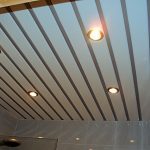Content
- 1 Materials and Tools
- 2 Drawing
- 3 Frame
Plasterboard designs are very versatile, they can have a variety of sizes, as well as shapes. They can arrange or fill any protrusions or columns, niches. A cabinet made of drywall is one of the most successful options, it can fit perfectly into absolutely any interior, because the possibilities of its decor are simply endless.

Materials and Tools
Drywall cabinets can have not only different decor, but also lighting. You can do it completely with your own hands, everything is quite simple and does not require any special knowledge and skills. It is enough to adhere to certain stages in the work and everything will surely work out.

First of all, you need to prepare everything you need to work - a grinder, metal scissors, a puncher, marker, level, spatulas, knife. The metal profile is most often used for the frame, and it is for it that metal scissors will be required. Sometimes a tree is chosen for the base, but even well-dried material can lead over time.

Given that the drywall sheets are fairly lightweight, it is best to fix it to a load-bearing wall using a guide bar.

Drawing
to make even a small cabinet with your own hands without a drawing will be extremely difficult, to say nothing of a more weighty design. To begin with, you should carefully measure the place where you decide to put your drywall cabinet. Be sure to write down the measurements on paper. In size, you can sketch a sketch of the future product.

After you have made a sketch and indicated all the dimensions, you should proceed to the calculation of the material that will be required for the work. Only after that it will be possible to proceed to direct installation.
Frame
It all starts with the installation of the guide profile, it is attached only to the supporting wall, this is very important. One of the racks is attached to the floor, and the second is duplicated on the ceiling, after which they are connected. The next step will be the installation of jumpers, if necessary, they are strengthened with a wooden beam for greater stability.

Next, it comes to the installation of drywall, the size should be made blanks. The sheet is marked and cut with a knife. It is fixed to the profile with a self-tapping screw, keep in mind that the self-tapping screw must fully fit into the profile. All seams are sealed with serpianka after preliminary puttying.

The entire surface of the drywall is necessarily plastered after priming, only after that you can proceed to the finish. It can be wallpaper, textured plaster, and anything else that matches the design of your room.
-
 How to mask nails on platbands
How to mask nails on platbands
-
 Without which tool it will not work to make a hole in polycarbonate
Without which tool it will not work to make a hole in polycarbonate
-
 What to do if the column of the second floor is wider than the first
What to do if the column of the second floor is wider than the first
-
 How to arrange the supply ventilation
How to arrange the supply ventilation
-
 How to make a hole in a tile without using a special tool
How to make a hole in a tile without using a special tool
-
 How to make removable polycarbonate frames for a greenhouse
How to make removable polycarbonate frames for a greenhouse
-
 Why you should not do dry cutting tiles
Why you should not do dry cutting tiles
-
 How to install platbands on a door without nails
How to install platbands on a door without nails
-
 How to install the last rail of the rack ceiling
How to install the last rail of the rack ceiling
-
 How to drill walls without dust
How to drill walls without dust
-
 How to make a threshold for a countertop laminate
How to make a threshold for a countertop laminate
-
 How to fill the leak on the roof
How to fill the leak on the roof
New publications are published daily on our channel in Yandex. Zen
Go to Yandex. Zen


